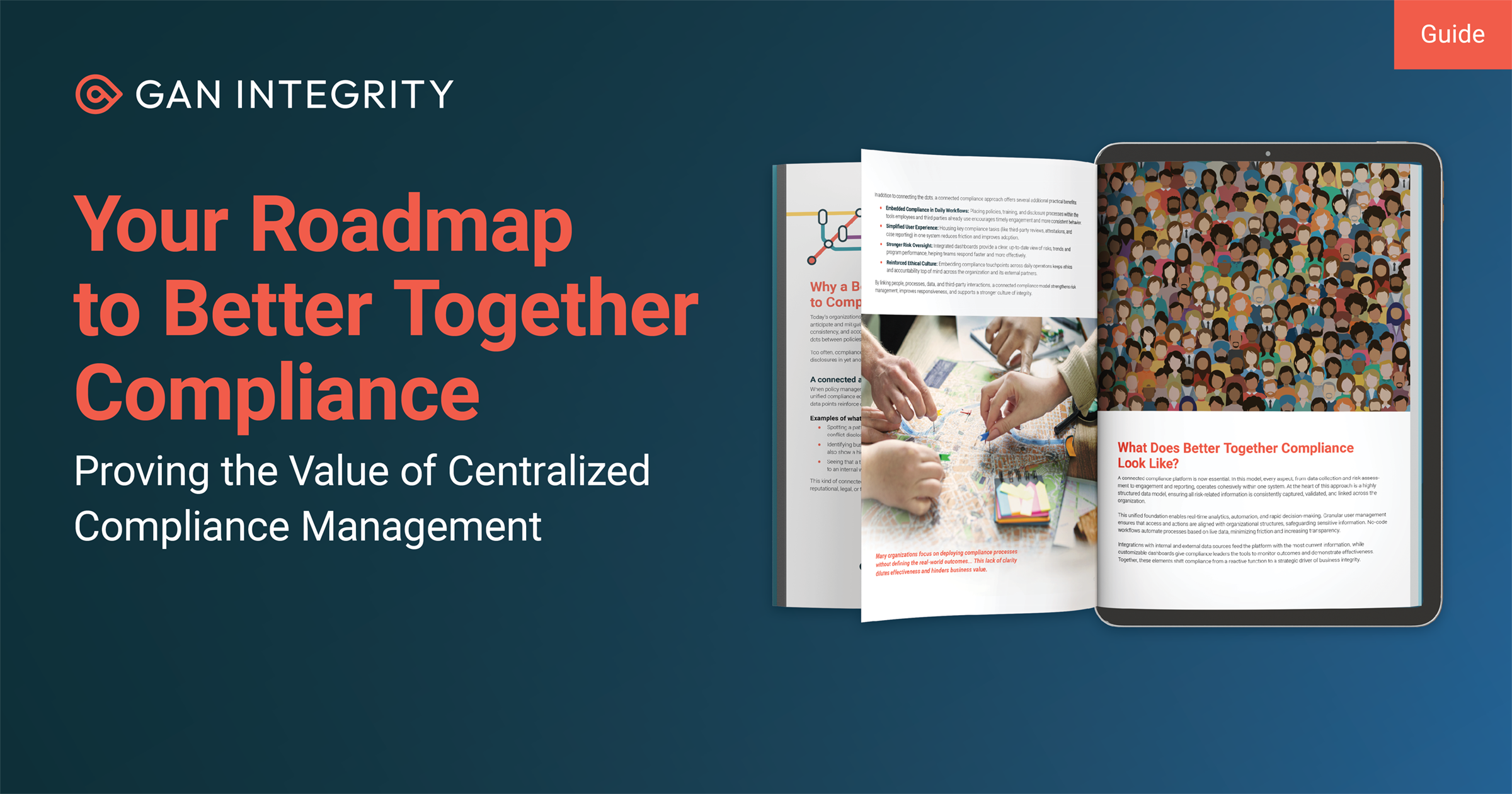The landscape of compliance is rapidly evolving, with increasing regulatory scrutiny and rising expectations for transparency and accountability. For organizations, having a robust incident management and whistleblowing program is not just a regulatory requirement, it’s a cornerstone of ethical business practice.
Selecting the right incident management software vendor is critical to the success of these programs. Here’s a comprehensive guide to the key capabilities and features compliance teams should prioritize when evaluating incident management and whistleblowing software vendors.
Centralized Case Management
A centralized case management system consolidates all incident reports, investigations, and related documentation into a single, secure digital platform. This eliminates data silos, reduces duplication of effort, and ensures that every report is tracked from intake to resolution.
For compliance teams, this means having a holistic, real-time view of organizational risk and the ability to maintain rigorous oversight, which is especially vital for large or geographically dispersed organizations.
What to look for when evaluating centralized solutions:
- Unified dashboard for all cases
- Secure storage of sensitive information
- Real-time status updates and tracking
Multiple Reporting Channels for Incidents
Accessibility is key to encouraging employees and third parties to report concerns. Look for solutions that offer a variety of reporting channels, such as hotlines, web forms, mobile apps, and in-person options. Support for anonymous and mobile-responsive reporting is increasingly important in today’s digital-first environment.
The more accessible and user-friendly the reporting options, the higher the likelihood that individuals will come forward, helping organizations detect issues early and foster a culture of openness and trust.
Capabilities to evaluate include:
- Web, mobile, phone, and in-person reporting options
- Anonymous reporting capabilities
- Mobile-responsive design
Automated Triage & Risk Assessment
Effective incident management starts with prompt and impartial triage. Rule-based triage processes can automatically assess the severity of each report, route it to the appropriate team, and escalate high-risk matters for immediate attention.
Automation not only speeds up response times but also ensures impartiality by, for example, excluding individuals named in a report from the review process. This reduces administrative burden and allows compliance teams to focus on substantive investigations.
Automation functionality to look out for:
- Customizable, rule-based workflows
- Automated prioritization and escalation of high-risk cases
- Safeguards to ensure impartiality
Role-Based Access Controls
Maintaining confidentiality is paramount in incident and whistleblowing management. Role-based access controls allow organizations to define granular permissions for different user roles, such as investigators, managers, or external legal counsel, ensuring that only authorized individuals can access or modify sensitive information. This is especially important for protecting whistleblower identities and complying with privacy regulations.
Look for vendors who provide:
- Customizable access permissions by role
- Segregated and time-bound access for external parties
- Ability to restrict access to specific parts of an investigation
Integrated Remediation, Root Cause Analysis, & Follow-up
A strong incident management platform should enable compliance teams to assign corrective actions, conduct root cause analyses, and track follow-up activities directly within the system. This ensures accountability, prevents recurrence, and demonstrates to regulators and stakeholders that the organization takes issues seriously and follows through on remediation.
Best-in-class solutions will provide:
- Tools for assigning and tracking corrective actions
- Built-in root cause analysis workflows
- Documentation of follow-up activities
Secure, Anonymous Communication for Whistleblowing
Trust is the foundation of any whistleblowing program. Secure, two-way encrypted communication channels allow compliance teams to engage with reporters, anonymously if needed, throughout the investigation process. This capability builds trust, encourages ongoing engagement, and enables investigators to gather additional information without compromising the reporter’s identity.
What to look for:
- Encrypted messaging between compliance teams and reporters
- Anonymous status updates and follow-up
- Multilingual communication and translation features
Multilingual & Inclusive Design
For global organizations, it’s essential that the reporting system is accessible to all users, regardless of language or ability. Multilingual support and inclusive design features ensure that everyone can report concerns, maximizing participation and meeting local accessibility and language requirements.
Evaluate solutions on their ability to provide:
- Support for multiple languages
- Accessibility features for users with disabilities
- Inclusive user interface design
Comprehensive Documentation & Audit Trails
A defensible compliance program requires thorough documentation. The software should automatically log every action, update, and communication related to each case, creating a tamper-proof audit trail. This is crucial for demonstrating compliance, supporting audits, and defending the organization during regulatory investigations or litigation.
Documentation functionality to evaluate includes:
- Automated, immutable logs of all case activities
- Comprehensive audit trails for each incident
- Easy export and integration with other compliance systems
Incidents and Whistleblowing Analytics & Reporting
Advanced analytics and reporting tools provide compliance teams with real-time dashboards, key performance indicators (KPIs), trend analysis, and benchmarking capabilities. These insights help organizations identify patterns, measure program effectiveness, and continuously improve their incident management processes. They also support transparent reporting to management and boards.
Look for incident management solutions that provide:
- Customizable dashboards and reports
- Real-time analytics and trend analysis
- Benchmarking and KPI tracking
Regulatory Adaptability
Regulations are constantly evolving, and organizations must be able to adapt quickly. The right software should offer highly configurable workflows, forms, and processes to meet the specific legal and regulatory requirements of different jurisdictions. This flexibility ensures ongoing compliance and reduces the risk of penalties.
Make sure your chosen solution provides:
- Configurable workflows and forms
- Ability to adapt to local and international regulations
- Scalable governance framework
GAN Integrity’s Incident Management and Whistleblowing Solutions
GAN Integrity’s incident management and whistleblowing solutions are purpose-built to address every critical need outlined above, making them a strong choice for compliance teams seeking a comprehensive, future-proof platform. Centralized case management system unifies all incident and whistleblower reports in one secure environment, providing real-time visibility and seamless coordination of investigations. This ensures compliance teams have a holistic view of organizational risk and can maintain rigorous oversight throughout the process.
GAN Integrity’s rule-based workflow automation empowers teams to tailor triage flows, prioritize high-risk reports, and route cases based on organizational structure and regional regulatory requirements. Role-based access controls provide granular, customizable permissions, protecting sensitive information and whistleblower identities while supporting compliance with data privacy laws.
Advanced analytics and customizable reporting dashboards empower compliance teams to monitor trends, benchmark performance, and provide actionable insights to leadership. GAN Integrity’s highly configurable workflows and scalable governance framework allow organizations to adapt quickly to evolving regulatory requirements, ensuring ongoing compliance across jurisdictions. With dedicated support and a commitment to user-friendly design, GAN Integrity’s solutions enable compliance teams to operate more efficiently, proactively manage risk, and foster a culture of integrity and accountability.
Building a Culture of Integrity
Selecting the right incident management and whistleblowing software vendor is a strategic decision that impacts the effectiveness of your compliance program and the trust your employees and stakeholders place in your organization. By focusing on these core capabilities compliance teams can ensure their programs are robust, effective, and ready to meet the demands of today’s complex regulatory environment.
A vendor that delivers on these requirements not only helps organizations manage risk and comply with regulations but also builds a culture of integrity and accountability. As you evaluate vendors, use this checklist to guide your decision-making process and ensure your incident management and whistleblowing programs are built to last.
Interested in learning more about the importance of incident management and whistleblowing solutions, and best practices for implementation? Explore our full guide!

Hannah Tichansky is the Content and Social Media Manager at GAN Integrity. Hannah holds over 13 years of writing and marketing experience, with 8 years of specialization in the risk management, supply chain, and ESG industries. Hannah holds an MA from Monmouth University and a Certificate in Product Marketing from Cornell University.
